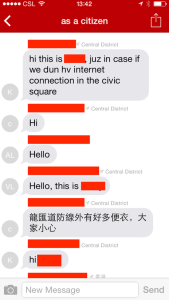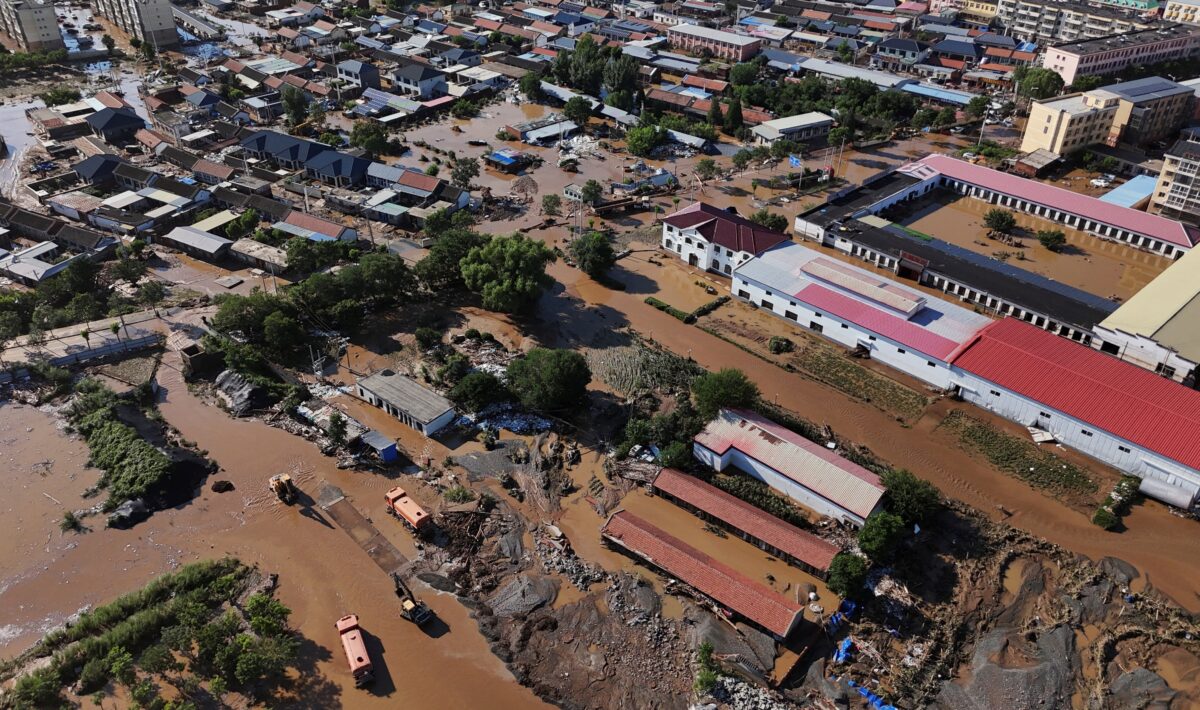Occupy Central: Is the Mesh Ready for Prime-time?
Since Saturday, Hong Kongers have been occupying the center of the city. As with many of these grassroots movements before, pictures showing massive protests flooded social media.
Defying police, thousands of demonstrating block main highway connecting Central and Wanchai to protest China. pic.twitter.com/Gw20Ic4rbf
— Alan Wong (@alanwongw) September 28, 2014
On Sunday, an increasing number of reports appeared on Twitter about mobile networks being blocked in central Hong Kong areas.
#HK police has shut down MOBILE NETWORK in #admiralty and #central. #hkprotest #OccupyCentral @ap @Reuters
— Kawai Wong (@wongkawaikawai) September 28, 2014
As a network researcher, I turned to my usuals tools of trade (about which I will write more soon) to find out what was going on. Unlike Syria or Iran, I don’t have any local contacts so I turned to widely available open-source information. Google’s Transparency data for Hong Kong highlighted two significant drops in connections on Sunday. In addition to having blocked mobile network connections in central areas, the network disruption did apparently affect some of the upstreams resulting in significant disruptions affecting most of Hong Kong. The granularity of the data doesn’t let us understand what neighbourhoods were the most affected.
Two major network disruptions recorded in the last 24 hours in Hong Kong. Source: Google Transparency pic.twitter.com/ahllBCZdN5
— The OSINT (@theosint) September 28, 2014
Network disruptions during protests is nothing new. Egypt, Syria, Tunisia … have all blocked access to the Internet at some point or another during the protests. Whether or not these measures were beneficial for law enforcement is questionable.
In most cases, the lack of available signal results in delayed coverage, misinformation starting to spread way quicker than usual and prevents the protesters from coordinating their efforts and movements.
It turns out however that Hong Kongers had a back up plan. As the network was going down in most central neighbourhoods, protesters were urged to download FireChat, an application that uses a form of mesh-networking to create a local chatroom without requiring Internet access. Unlike regular networking, mesh-networking enables devices to talk to each other, creating a digital grid in the city to which any neighbouring device can connect. If enough users are participating to this grid, it becomes considerably more resilient and resistant to censorship/surveillance than a centralized network infrastructure.
According to FireChat app founders, 0.1% of Hong Kongers were using the application on Sunday evening. (It’s important to note that FireChat app tracks the app usage with Google Analytics, which is a questionable practise given the use cases of the application)
Right this moment, more than 1 person in 1000 in #HongKong has their phone unlocked and looking at a #FireChat… http://t.co/TJjlK8ffYQ
— Stanislav Shalunov (@shalunov) September 28, 2014
So, why this sudden success and use of mesh networking while many tried and failed to deploy mesh-networks during similar events?
As I summed it up in a tweet, density and need were the two factors I think. The fact that there is such a high density of smartphones running the app in a bounded area because there is no other way to communicate contributed to the success of this experiment.
This picture illustrates why Hong Kong is the new playground for mesh networking. Driven by need, enabled by density pic.twitter.com/3Us5gxnDFI
— Frederic Jacobs (@FredericJacobs) September 29, 2014
It is important however to realize that FireChat app has some limitations:
– Because of how Multipeer Connectivity works, you need to be close to a member of the mesh to be able to connect to it (30 to 100 feet).
– The application has no encryption meaning that no discussion is really private.
– Messages are not checked for integrity, meaning that impersonation can happen.
This is only the beginning. Mesh-networks are not ready yet for prime-time. FireChat app would be pretty useless in a setting like rural Syria or Iran when you have way fewer powerful smartphones and a way lower density of connected devices. But eventually, our devices might be able to replace the top-down telecom infrastructure that enabled communications until now. Interesting projects by Open Garden or the Serval Project are aiming at building wider-scale mesh networks and with what we’ve seen, we can only be optimistic for the future.



